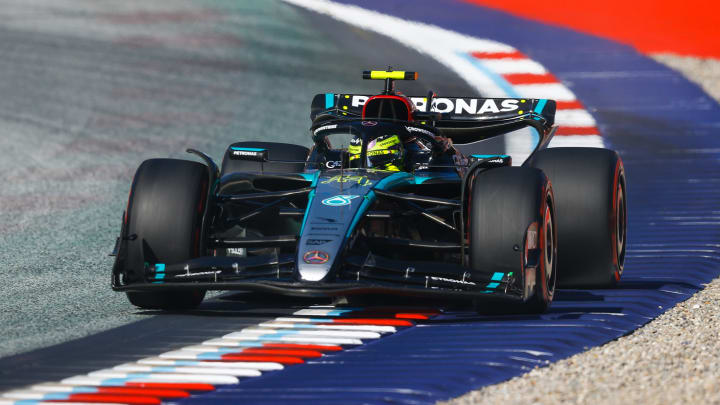Mercedes Casts Doubts On The W15's New Floor Upgrade - 'Too On A Knife Edge'

Mercedes director James Allison has revealed that the team is trying hard to understand the impact of the new floor on the W15 F1 car, which supposedly upset the car's "balance" during the Dutch GP at Zandvoort, causing a considerable drop in lap time.
The floor in question is the same one that was introduced for the Belgian Grand Prix, ahead of the summer break. However, Mercedes decided not to use it for the race where Lewis Hamilton claimed victory after the floor offered mixed results during free practice.
Mercedes designed the new floor to increase the amount of downforce on the car, and noting its effectiveness in doing so, it re-introduced the key aerodynamic component for the Dutch GP. However, the added downforce brought unintended side effects, leaving the team in the midfield, with George Russell finishing seventh and Hamilton in eighth.
Explaining in Mercedes' post-race debrief video, Allison said that the team was investigating the floor further to gain a better understanding of it for the upcoming races. When asked how the floor was performing, he told Motorsport.com:
“Simple answer is, we don't fully know.
“You can take some straightforward measurements and say that the downforce it was supposed to deliver looked like it was there. So at one level, you could take comfort that it worked as expected.
“But a lot of the pace of the cars in this year, particularly, is down to how well they handle. So it's not just a question of ‘does your aero package deliver you downforce’, but is it delivering you the balanced car that you need through the corners? Is it delivering you the balanced car you need from high speed to low speed?
“We definitely know that we didn't have a well-balanced car this weekend. That's where most of our pace went. Whether that was the new floor, the new aero package or not, we need to keep an open mind and something we will need to revisit in future races.
“Right now, we know it measured the downforce, but we're not certain that it delivered good balance. Something we need to investigate as we go on through the year.”
One particular problem that the team observed on the W15 was the extremely heat-sensitive rear tires, prone to getting hot even with the tiniest amount of slip. He added:
“We, for whatever reason, managed to produce a car that was too on a knife edge.
“It was too ready to snap at the rear, for the rear to lose grip and contact with the road when the drivers are trying to hustle it. And qualifying is when they need to lean on the car and we could get a really good lap if they just managed to keep this very pointy car sort of on rails.
“Just the tiniest slip of the rear caused by a gust, caused by whatever, and then the rear tires will light up. The temperature of the surface of the rubber goes up dramatically just with one tiny little slip.
“As soon as that surface temperature is up, it doesn't recover for several corners. The corners come at you thick and fast in Zandvoort and there's not really any long straights for them to cool down on. And so one snap, that's your lap gone.”
